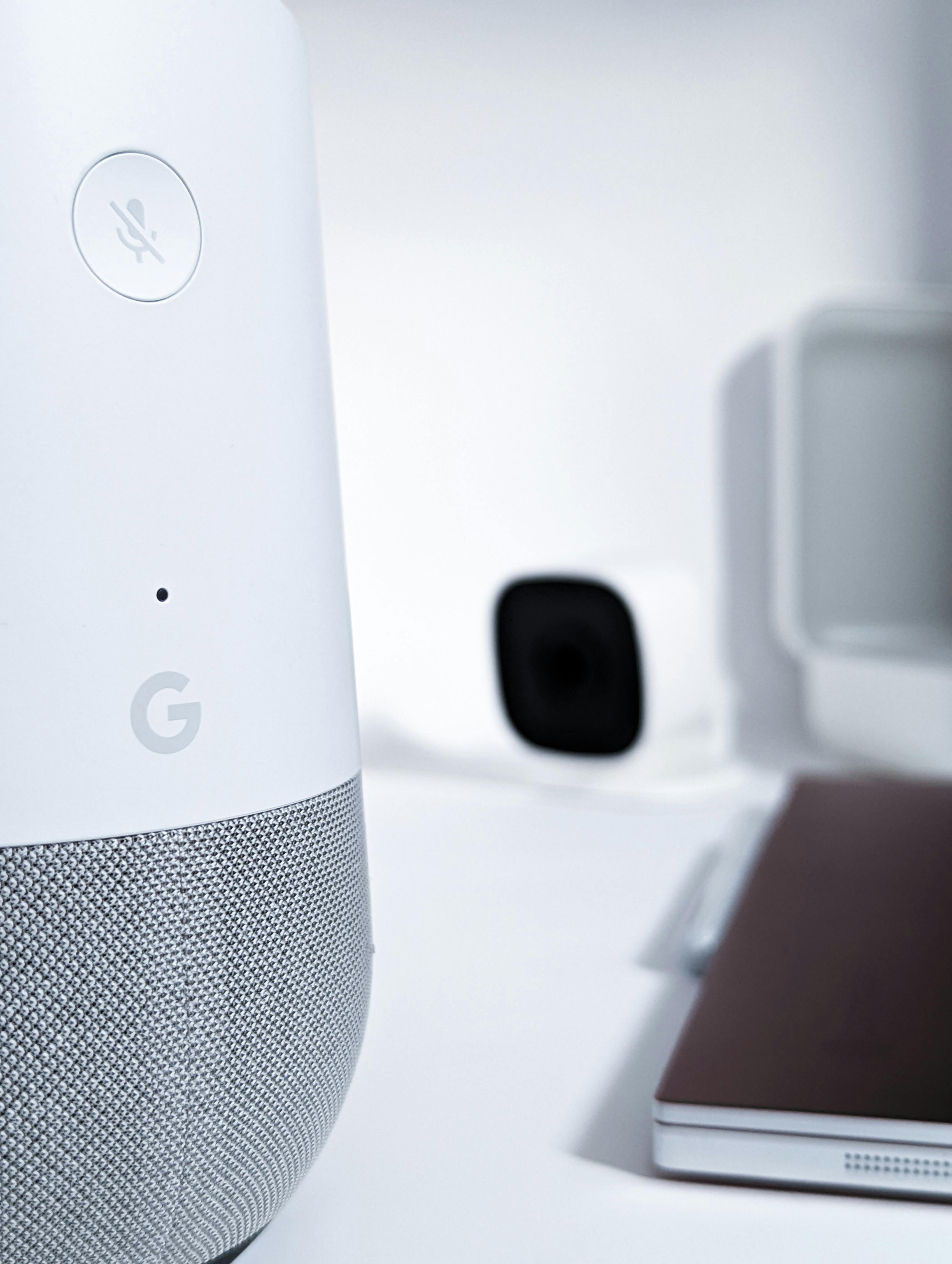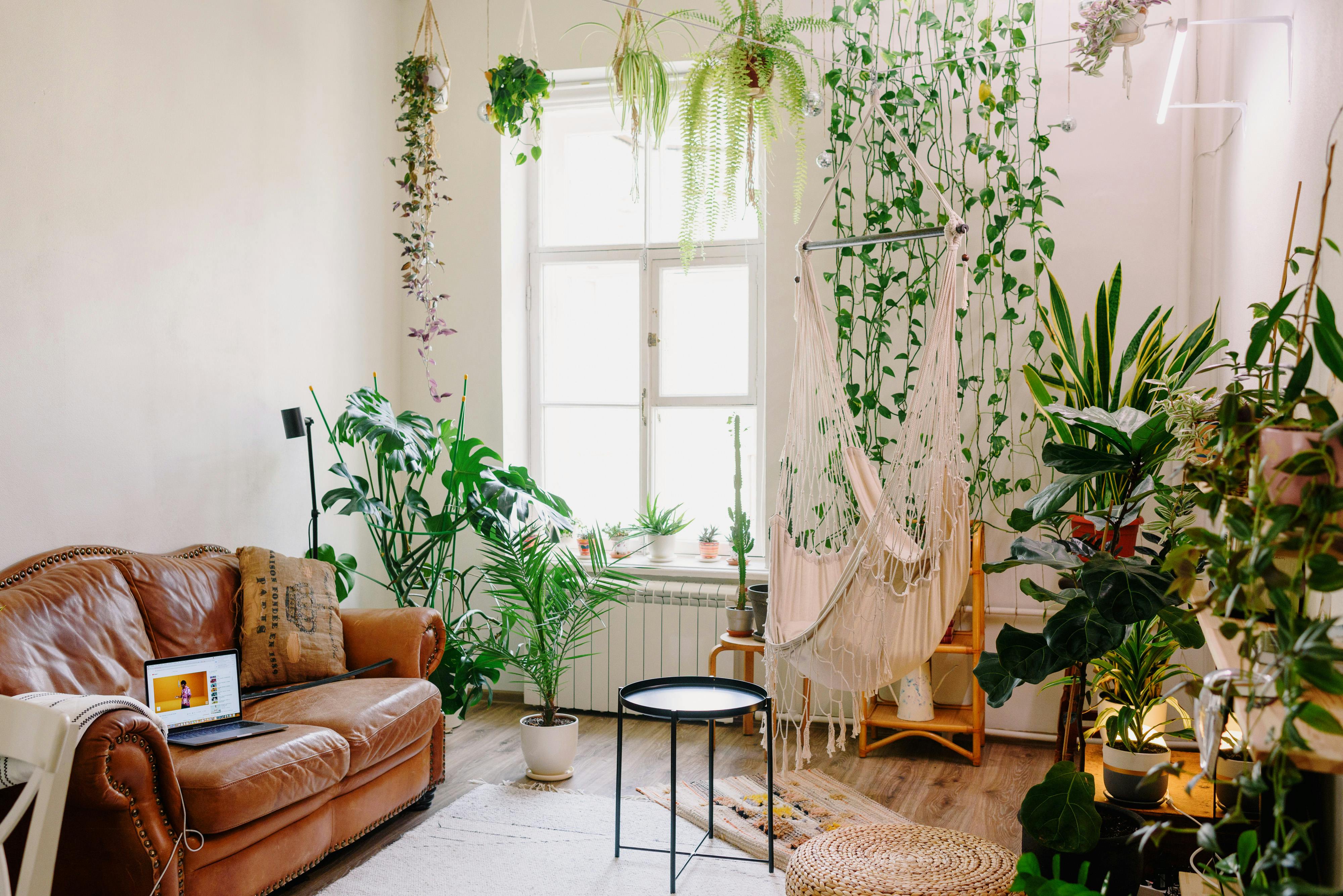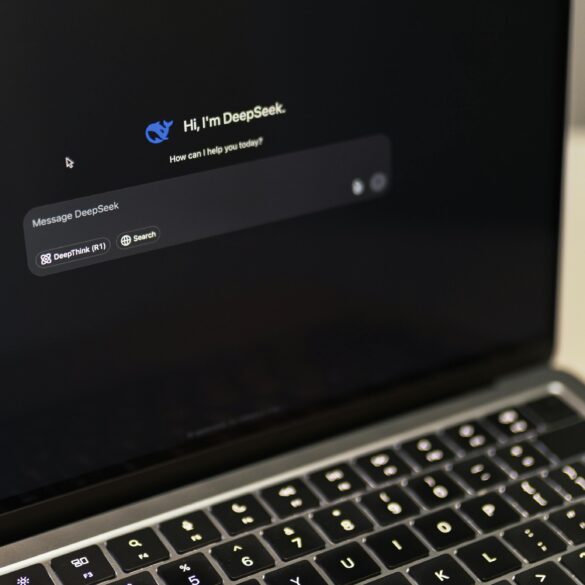Top AI-Powered Interior Design Tools for Dutch Homeowners (2025)
Somewhere between the Saturday strolls through De Bijenkorf’s home department and those sleepless nights doomscrolling Pinterest, Dutch homeowners (from Wassenaar to Westland) know that personalizing a home can be complicated, expensive, and—let’s be honest—overwhelmingly subjective. Enter: AI-powered interior design tools. Not so long ago, such technology was reserved for architects or high-end designers with sky-high budgets. Now? Anyone with a laptop, smartphone, and a dash of curiosity can experiment, plan, and visualize major changes for their Dutch home.
Having lived through my own renovation saga, what genuinely stood out were the tools that actually solved problems (and not just created new ones). I want to make one thing crystal clear before we dive in: not every AI tool is right for every home, every need, or every cultural context. There are subtle differences between what works in a canal-side Amsterdam apartment—think steep stairs and low beams—and a suburban Hoofddorp new build. And don’t even get me started on those charming but infuriatingly cramped Den Haag homes. Anyway, let’s break this all down: what’s hype, what’s helpful, and what will actually get you closer to the gezellig, future-ready home you crave.
Why AI Interior Design Tools Matter in the Netherlands
If there’s one thing that’s remained consistent through my conversations with Dutch homeowners, it’s the hunger for balance: stylish yet practical, innovative but authentic. The average Dutch home is often a surprisingly complex ecosystem—a patchwork of light, narrow hallways, and ever-present cycling gear. Historically, getting professional interior design help was both expensive and, especially for smaller spaces, hard to justify. Enter AI: a true democratizer. For the first time, digital platforms empower “regular” homeowners to create, iterate, and see possibilities previously reserved for the pros.
- Instant visualization: Move walls, swap colors, and experiment with layouts in real-time
- Culture-centric suggestions: Tools trained on Dutch home styles, lighting conditions, and even typical local furniture
- Budget forecasting: Smart AI can (with the right data in) estimate costs down to the last euro
- Personalization: No more “one-size-fits-all”—AI adapts to your preferences, not just global trends
One caveat I always share: AI doesn’t replace taste or context. It amplifies possibilities, but without a sense of what you—and your Dutch home—actually need, you’ll still be overwhelmed by choice. That’s why my approach is to use these tools as digital collaborators, not replacements for lived experience or getting input from friends/family (who, let’s be honest, will share their opinions whether you want them or not).
How AI Design Tools Actually Work (and When They Don’t)
Let me clarify something upfront: “AI” is the hot tech buzzword, but not all tools branded as such actually leverage AI in meaningful ways. The best ones rely on machine learning algorithms, data-driven insights, and computer vision to interpret your preferences, photos, and measurements—sometimes with spooky accuracy, other times leading to hilariously mismatched results. Sounds familiar to anyone who’s ever tried to scan a crooked Dutch window? Yeah, me too.
- You upload photos of your space, existing furniture, or even mood boards
- The tool analyzes shape, color, light, and “reads” your room’s architecture
- It suggests layouts, palettes, and decor options based on training data—sometimes blending Scandi minimalism with the cosiness of a Leiden student pad (sometimes… badly—see my later section on AI fails)
- You adapt, tweak, experiment, and—when it’s good enough—export final plans you can use for shopping or sharing with builders
But, to be more precise, “AI” isn’t magic. It’s a prediction tool, not a creative genius. The smart move: use it as a supplement, not a substitute, for real-life inspiration.
Overview: Top AI-Powered Interior Design Tools Popular in the Netherlands
Before I get into head-to-head comparisons, here’s a quick look at the most widely used and talked-about AI room planners and design tools among Dutch homeowners as of this year. The list below covers a range of needs—budget-friendly to pro-grade. Did I forget your favorite? Let me know in the comments—my opinions keep evolving with every client and project.
| Tool | Description | Best For | Dutch Language Support |
|---|---|---|---|
| Planner 5D | Drag-and-drop room planner with AI furniture placement and 3D visualization | Beginner to intermediate users, quick room makeovers | Yes |
| HomeByMe | AI-powered layout recommendations, product catalogue, real-time collaboration | Planning whole-home remodels, collaborating with pros | Partial |
| Reimagine Home | AI transforms uploaded photos of your own rooms, suggests new looks | Quick visualizations from real photos | Limited |
| IKEA Kreativ | Scans your real room, adds virtual IKEA furniture, AI-driven suggestions | Furnishing on a budget, maximizing small spaces | Yes |
| VividWorks | Advanced AI 3D visualization for home renovations, custom configurations | Advanced planning, working with builders/contractors | Yes |
Okay, so… which of these actually delivers for Dutch homes? I’ll dive into the pros, cons, and lived realities in the next section. If you’re new to AI design tools, don’t stress—there’s something here for every skill level and every style preference.
Comparing the Best: What Stands Out for Dutch Homes?
Let’s not beat around the bush: with AI-powered design tools, it’s not about picking a “winner”—it’s about matching strengths to the very particular quirks of Dutch homes. I once helped a friend in Utrecht discover that their favorite “open plan” American layouts looked absolutely bonkers (their word, not mine!) in a narrow, 19th-century Dutch terrace. What really matters is whether AI can handle features—like uneven floors, awkward window placements, or high ceilings—that are unique to this country.
Planner 5D: User-Friendly and Locally Adaptable
Pros: Super intuitive drag-and-drop experience, surprisingly robust Dutch furniture options, and a steadily improving Dutch language menu. One of my colleagues in Haarlem found it especially handy for quick living room reconfigurations—more or less, it eliminates sketching altogether. The AI’s “auto-arrange” can feel robotic at first glance, but after a few experiments you’ll get a genuine sense of layout possibilities2.
Cons: Sometimes, the “suggested” color palettes are more Miami Beach than Maastricht (I still cringe thinking about what it did to my own blue-and-white Delft-inspired kitchen). It’s not perfect, but it’s fast, cheap, and good enough for brainstorming.
HomeByMe: Rich Catalog, Collaboration, and Customization
If you’re considering a whole-home renovation, HomeByMe is an absolute powerhouse. Not only does it come packed with AI-powered layout suggestions, but it allows instant collaboration with designers, builders, or (frankly) that one family member who insists on being involved. My best tip: upload your official floor plan in metric—imperial measurements will only confuse you, and the system.
- Large furniture catalog (including Dutch brands and favorites)
- Room-sharing feature is ideal for group projects (works a treat for families scattered across the country)
- AI learns from your interactions—a bit of an uncanny valley, but genuinely helpful
Negative? Well, I’ve found the initial learning curve steep, especially for anyone not fluent in English, as Dutch translation is still a work in progress. Plus, beware: if you’re not careful, you’ll find yourself lost in detail, making virtual perfection the enemy of “good enough” living.
Reimagine Home: Ultra-Fast Visual Makeovers from Photos
“Isn’t there a tool that just lets me snap a picture of my ugly hallway and see what could be?” Absolutely. Reimagine Home’s biggest strength is instant, image-driven transformation suggestions. Upload a snap, and in 12-20 seconds, you get a dozen new versions: bohemian, minimalist, or even “classic Dutch.” I’d be lying if I said all the results are practical, but they are inspiring—and occasionally, laugh-out-loud wrong.
Watch out, though: Dutch language support is limited, and shopping links often redirect to international suppliers, not local chains. For pure visualization, however, it’s unbeatable.
IKEA Kreativ: For Budget-Conscious, Style-Savvy Dutch Homes
Back in 2023, I advised a first-time buyer in Rotterdam to scan her new flat with IKEA Kreativ as part of her “online discovery day” (before risking a real trip to the maze that is IKEA Delft). The app mapped her compact studio precisely, suggesting modular setups and even indicating where a Pax wardrobe wouldn’t fit—possibly saving a future relationship! It has AI-driven “room scanning” (surprisingly precise on iOS, slightly buggy on Android, in my experience) and automatic product placement, so you get a nearly real-life IKEA shopping spree in your very own setting.
- Intuitive, mobile-first interface (even for non-techies)
- Extensive Dutch product library—what you see, you can buy locally
- Saves time, feet, and arguments
The downside? A heavy IKEA bias—styles and suggestions can feel monotonous or soulless for true design connoisseurs. It’s best used as a starting point, not a complete roadmap.
VividWorks: Powerhouse for Dutch Renovators and Builders
VividWorks is honestly not for the faint-hearted—or the budget-conscious. Used by some of the Netherlands’ top home construction and renovation pros, it allows for AI-powered, ultra-detailed 3D and even AR/VR modeling. This is overkill if you’re just updating curtains, but a massive upgrade for urban infill projects or fully custom builds near the North Sea coast.
My advice: if you’re hiring an architect or contractor, request they use a platform like VividWorks. It’s particularly effective for visualizing kitchen and bath configurations unique to Dutch spaces (e.g., split-level townhouses, off-standard staircases).
Advanced Use Cases: Making AI Work Smarter for Dutch Homes
Okay, so here’s where things really get interesting. What if you want more than a just-for-fun visualization? What if you need serious, actionable plans—maybe even permit-ready ones? Over the last year, more advanced AI-powered platforms have expanded their capabilities in the Netherlands:
| Platform | Feature | Dutch Use Case | Expert Tip |
|---|---|---|---|
| RoomGPT | AI-driven style suggestions tailored to uploaded images and written prompts | Visualizing period property renovations with modern finishes | Use Dutch prompts for best results, even if the interface is English |
| Modsy | Virtual staging using AI-matched products from online retailers | Prepping Amsterdam rentals for the expat market | Check for EU-compatible products to avoid cross-border shipping delays |
| Homy.AI | Automated daylight and mood lighting simulations | Maximizing natural light in north-facing Dutch flats | Pair with your postcode data for ultra-local lighting accuracy |
What I like about advanced cases—beyond just pretty pictures—is the mix of creativity and practicality. From exploring landmark protections in Utrecht to navigating Amstelveen’s strict building permits, good AI platforms integrate Dutch regulations, not just design taste. This is not true everywhere—read the fine print and always double-check legal/permit needs with your gemeente.
Have you tried any of these advanced cases? Are there features that saved your renovation (or nearly ruined it)? Pause here and reflect before you go further—sometimes taking stock of your needs is the best investment of all.

How AI Supports (and Sometimes Fumbles) Dutch Design Aesthetics
Anyone who’s spent any time in the Netherlands knows Dutch interiors are a world apart: sunlight is precious, color palettes tend to be muted (lots of whites, blues, and soft earthy tones), and every millimeter of space counts—a direct response to historical density and limited square meterage. What struck me, again and again, is that most “universal” AI design tools were trained largely on American, British, or pan-European data before getting fine-tuned for local use. You notice fast: suggested sofa sizes that block the sliding terrace doors, or imported “eclectic” combinations that clash with deliberately minimalist Dutch sensibility.
- AI excels at mixing Dutch classic styles (think Rijksmuseum-inspired motifs) with contemporary elements
- Most tools “learn” to recommend bigger windows, maximizing the little natural light we have
- Storage is king—AI suggestions often excel at finding tiny “dead corners” for built-ins, shelving, or smart closet hacks
- Daylight and window placement often still go off the rails; always double check recommendations on your own
Featured Case Study: Bringing Dutch Tradition to Life with AI
Let me share a story. In 2024, I worked with a family in Haarlem, who wanted to update their ground-floor apartment but keep its 1930s charm. They used HomeByMe with a large image library of Dutch “vooroorlogs” details—original leaded glass, herringbone wood floors, layered textures. The AI initially suggested modern open shelving and Scandinavian-style furnishings. After about ten rounds of feedback and photo uploads, the AI began integrating traditional wooden accents and classic colorways, delivering results that felt, as the client put it, “100% Haarlem, not Stockholm!”
My takeaway? The more local context you give AI, the closer it’ll come to your dream home. Don’t let anyone tell you these tools force you into “cookie-cutter” trends.
Pitfalls and Mistakes: Read Before You Dive In
Alright, time for some honest confessions. If there’s anything years of tech-testing has driven home, it’s this: AI-enhanced interior projects will go awry if you treat them as infallible or stop asking questions. Here’s where most Dutch users stumble (and, truthfully, where I’ve gone astray):
- Trusting AI measurements completely—classic Dutch window frames and radiators almost always “confuse” room scanners. Bring in a trusty rolmaat (tape measure) for final checks3.
- Overfitting to the AI’s “trendy” recommendations rather than personal taste or practical constraints (I lost one client to a deep forest green kitchen—looked great online, not so much in winter gloom).
- Blowing the budget on AI-inspired “must buys” before sanity-checking shipping, functionality, and space realities.
- Neglecting regulations: Unlike some countries, Dutch municipalities are sticklers for compliance—AI cannot (yet) guarantee your plans are fully up to code.
What If AI “Gets It Wrong”? (And It Will!)
I’d be remiss not to share that, yes, sometimes the algorithm ends up suggesting brown faux-leather for your canal house—that’s when you laugh, take a screenshot, and use it as a talking point. Over time, the best AI platforms “learn” from your corrections, and that’s when the magic actually starts.
The Future: Where Are AI Interior Tools Headed for Dutch Homeowners?
Fast forward two or three years: what should Dutch homeowners expect? Honestly, the speed of change is mind-boggling. We’re already seeing early-stage Dutch-language AI design assistants that draw on municipally sourced building data, historic property registries, and even personal energy bills to forecast the sustainability of each proposed change4.
- Hyper-localized AI design advisers pulling from Dutch culture, climate, and sustainability targets
- Instant 3D-printed furniture suggestions built to fit—you order, and an Amsterdam workshop delivers within days
- Smarter energy and climate simulation tools (critical as Dutch energy laws tighten)
- AI design that integrates with smart home tech for “future living” scenarios
Let’s step back. For now, the Dutch homeowner has an unprecedented array of “digital sidekicks” at their fingertips. The trick is to combine these innovations with old-fashioned wisdom, local flair, and a hefty dose of self-awareness. Does that sound hard? Maybe. But it’s very, very doable—with the right mindset, and by making the tools adapt to your life, not the other way around.
Final Thoughts: Authentic Advice for Dutch Homeowners and Next Steps
What really strikes me after years of elbow-deep tech testing in Dutch homes is this: AI isn’t a magic wand, but it’s an incredibly powerful compass—and maybe sometimes a cheeky sidekick if you know when (and how) to tell it “nee, bedankt!” Honestly, the sharpest Dutch homeowners I’ve worked with always balance tool-driven inspiration with brutally practical judgment. They know when to follow the AI’s nudge and when to trust their own lived wisdom—or their grandma’s, for that matter.
To sum up, here are my most actionable takeaways:
- Use AI for ideation and instant visualization—but finish with real measurements and physical samples
- Look for platforms with datasets trained on Dutch homes for more reliable suggestions
- Check all legal and zoning requirements with your local gemeente before any major construction
- Pair AI tool advice with conversations—neighbors, craftsmen, architects—with local experience
FAQ: Quick Answers to Common Questions
- Can these tools help me choose eco-friendly renovations? Yes, many now integrate sustainability and energy assessment modules tailored for Dutch goals, but always consult a local expert for grants or technical compliance5.
- Do I need to be tech-savvy? No—today’s best platforms take minutes to onboard, but deeper features may require some trial and error.
- Are there AI tools specifically made for the Netherlands? Yes! Platforms like Homy.AI are expanding Dutch language interfaces and incorporating hyper-local data sets; watch this space.
- Will AI ever fully replace designers? Unlikely—at least not for uniquely Dutch spaces and tastes. The best outcomes mix human input and tech savvy.
References
Sources and Further Reading



